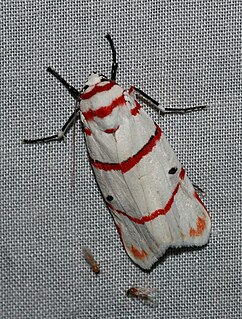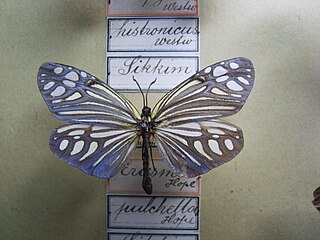
Ivan Simon Cary Elwes is an English actor and writer. He is best known for his leading film roles as Westley in The Princess Bride (1987), Robin Hood in Robin Hood: Men in Tights (1993), and Dr. Lawrence Gordon in the Saw film series. He is also known for leading roles in films like Glory (1989), Hot Shots! (1991), and The Jungle Book (1994), as well as supporting roles in films including Days of Thunder (1990), Bram Stoker's Dracula (1992), Twister (1996), Kiss the Girls (1997), Liar Liar (1997), Michael Collins in From the Earth to the Moon (1998), Cradle Will Rock (1999), Shadow of the Vampire (2000), The Cat's Meow (2001), Ella Enchanted (2004), A Christmas Carol (2009), and No Strings Attached (2011). He has had recurring roles in television series including The X-Files, Seinfeld, Psych, and Stranger Things. He joined the third season of The Marvelous Mrs. Maisel as Gavin Hawk, a famed Broadway actor.

The Princess Bride is a 1987 American fantasy adventure comedy film directed and co-produced by Rob Reiner, starring Cary Elwes, Robin Wright, Mandy Patinkin, Chris Sarandon, Wallace Shawn, André the Giant, and Christopher Guest. Adapted by William Goldman from his 1973 novel The Princess Bride, it tells the story of a farmhand named Westley, accompanied by companions befriended along the way, who must rescue his true love Princess Buttercup from the odious Prince Humperdinck. The film essentially preserves the novel's narrative style by presenting the story as a book being read by a grandfather to his sick grandson.

Henry John Elwes, FRS was a British botanist, entomologist, author, lepidopterist, collector and traveller who became renowned for collecting specimens of lilies during trips to the Himalaya and Korea. He was one of the first group of 60 people to receive the Victoria Medal of the Royal Horticultural Society in 1897. Author of Monograph of the Genus Lilium (1880), and The Trees of Great Britain & Ireland (1906–1913) with Augustine Henry, as well as numerous articles, he left a collection of 30,000 butterfly specimens to the Natural History Museum, including 11,370 specimens of Palaearctic butterflies.

Cassian Cary Elwes is a British independent film producer and talent agent.

Gervase Henry Cary-Elwes, DL, better known as Gervase Elwes, was an English tenor of great distinction, who exercised a powerful influence over the development of English music from the early 1900s up until his death in 1921 due to a railroad accident in Boston at the height of his career.
The elm cultivar Ulmus 'Atropurpurea' [:dark purple] was raised from seed at the Späth nursery in Berlin, Germany, circa 1881, as Ulmus montana atropurpurea, and was marketed there till the 1930s, being later classed as a cultivar by Boom. Henry (1913) included it under Ulmus montana cultivars but noted that it was "very similar to and perhaps identical with" Ulmus purpureaHort. At Kew it was renamed U. glabraHuds. 'Atropurpurea', but Späth used U. montana both for wych elm and for some U. × hollandica hybrids, so his name does not necessarily imply a wych elm cultivar. The Hesse Nursery of Weener, Germany, however, which marketed 'Atropurpurea' in the 1950s, listed it in later years as a form of U. glabraHuds..

The putative hybrid cultivar Ulmus × hollandica 'Serpentina' is an elm of unknown provenance and doubtful status. Henry identified it as intermediate between U. glabra and U. minor, a view accepted by Bean and by Melville, who believed that the specimens at Kew bearing the name 'Serpentina' were U. glabra "introgressed by U. carpinifolia" [: U. minor] and were similar to but "distinct from 'Camperdownii'".
The European White Elm cultivar Ulmus laevis 'Aureovariegata', a yellow-variegated form, may have been the tree first listed, without description, in Hortus Regius Monacensis (1829) as Ulmus effusa variegata, grown at the Munich Botanic Garden. An Ulmus effusa fol. variegatis (Hort.) was first described c.1890 by the Späth nursery of Berlin, which distributed the tree in the late 19th century. The name U. effusa f. aureovariegata appeared in Beissner and Schelle's Handbuch der Laubholz-Benennung, 1903, without description.

Harry Plunket Greene was an Irish baritone who was most famous in the formal concert and oratorio repertoire. Making a great contribution to British musical life, he wrote and lectured on his art, and enriched the field of musical competitions and examinations. He also wrote Where the Bright Waters Meet (1924) a classic book about fly fishing.

Cyana is a genus of moths in the family Erebidae. Species are well distributed in Africa, Madagascar, China, India, Sri Lanka, Myanmar, Sumatra, Java and Borneo. The genus was erected by Francis Walker in 1854.

John Elwes [né Meggot or Meggott] MP was a Member of Parliament (MP) in Great Britain for Berkshire (1772–1784) and a noted eccentric and miser, suggested to be an inspiration for the character of Ebenezer Scrooge in Charles Dickens' A Christmas Carol. Dickens made reference to Elwes some years later in his last novel, Our Mutual Friend. Elwes was also believed to inspire William Harrison Ainsworth to create the character of John Scarfe in his novel The Miser's Daughter.

Philiris is a genus of butterflies in the family Lycaenidae. The species of this genus are found in the Australasian realm. Philiris was erected by Julius Röber in 1891. It is a speciose genus; Tite decided on 56 species, Sands added 11 species and placed the taxa into 21 species groups (broadly accepted by Parsons Most species are on New Guinea.Tite considered Philiris and Candalides Hübner, 1819 to be sisters. Eliot placed Philiris in Luciini Waterhouse & Lyell, 1914,

Isma is an Indomalayan genus of grass skippers in the family Hesperiidae.

Acmeshachia gigantea is a moth of the family Notodontidae first described by Henry John Elwes in 1890. It is found in Pakistan, north-western India, Nepal, north-eastern India, Myanmar, northern Thailand, south-western China, Taiwan and northern Vietnam.

Cyana effracta is a moth of the family Erebidae first described by Francis Walker in 1854. It is found in Nepal, the north-eastern Himalayas, Taiwan, China, Burma, Peninsular Malaysia, Sumatra and Borneo.

Nossa is a genus of moths in the family Epicopeiidae. The genus was described by William Forsell Kirby in 1892.
Cyana flammeostrigata is a moth in the family Erebidae. It was described by Timm Karisch in 2003. It is found in Cameroon, Equatorial Guinea, Kenya, Nigeria and Uganda.
Cyana pretoriae is a moth of the family Erebidae. It was described by William Lucas Distant in 1897. It is found in the Democratic Republic of the Congo, Kenya, Lesotho, Malawi, Mozambique, Somalia, South Africa, Tanzania, Uganda, Zambia and Zimbabwe.

The hybrid elm cultivar Ulmus × hollandica 'Fastigiata' was first listed and described as Ulmus glabra fastigiata, a narrow-crowned elm with large smooth leaves, by Petzold and Kirchner in Arboretum Muscaviense (1864). C. Berndt of the Berndt Nursery, Zirlau, Schweidnitz, described an elm of the same name in Mitteilungen der Deutschen Dendrologischen Gesellschaft, that he had received in 1903 "from a renowned nursery in Holstein" as Ulmus montana fastigiata macrophylla. A tree of that name had been listed by Dieck in 1885 without description. Berndt reported that his U. glabra fastigiata was "easy to confuse with U. montana superba", a tree "known in the Magdeburg region as Ulmus praestans", a statement confirming that, like that cultivar, his tree was a form of U. × hollandica. Karl Gustav Hartwig who received specimens of U. praestans from Kiessling of the Magdeburg city nursery in 1908, concluded (1912) that U. glabra fastigiataKirchner was indistinguishable in leaf or habit from U. praestans. An U. campestris glabra fastigiataArb. Musc. [ = Kirchner] was distributed by the Hesse Nursery, Weener, Germany, in the 1930s, where it was listed separately from U. praestans.

Campylotes is a genus of day-flying moths of the family Zygaenidae. The genus was erected by John O. Westwood in 1840.















